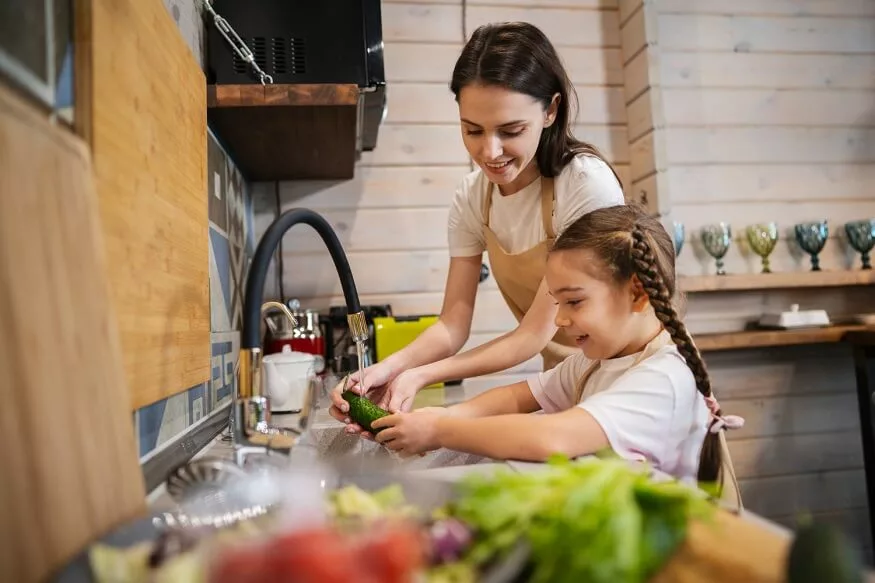In a world buzzing with screens and sedentary temptations, keeping kids active is not just a good idea—it’s essential. The benefits of physical activity for children extend far beyond the playground; they influence everything from physical health to cognitive development. In this guide, we embark on a journey to explore a treasure trove of tricks to keep kids active, making fitness a joyful part of their daily routine.
Engage in Active Play
- Hide and Seek Adventures: This timeless game isn’t just about seeking and hiding—it’s a brilliant way to get kids moving. The anticipation, sudden dashes, and stealthy hiding involve bursts of energy that make it an ideal activity for promoting cardiovascular health.
- Obstacle Course Extravaganza: Set up an obstacle course in the backyard or a local park. Use hula hoops, cones, and even old tires to create a challenging and exciting course. This not only enhances physical agility but also stimulates problem-solving skills.
- Dance Party Delight: Crank up the music, clear the living room, and host a dance party. The rhythmic movements and joyous beats not only make for a lively experience but also promote cardiovascular fitness, coordination, and motor skills.
Sports Galore
- Miniature Olympic Games: Design a day of “Mini Olympics” with a variety of events such as sprints, long jumps, and even a simple shot put using soft toys. It introduces kids to different sports and encourages friendly competition.
- Backyard Sports Bonanza: Tailor sports like football, basketball, or even a simplified version of cricket to suit your backyard. This not only promotes physical activity but also helps children understand the rules and teamwork.
- Cycling Adventures: Dust off those bikes and head to a nearby cycling track or a safe neighbourhood area. Cycling is an excellent way to build leg strength, coordination, and cardiovascular fitness. Plus, it’s a fantastic family activity.
Also Read: Active Listening Techniques for Kids that work
Incorporate Outdoor Adventures
- Nature Scavenger Hunts: Combine the thrill of the hunt with outdoor exploration. Create a list of items for kids to find in the garden or park. This not only keeps them moving but also enhances their observation skills.
- Rock Climbing Exploration: If you have access to safe rock climbing areas, it’s a fantastic activity for kids. Even indoor climbing walls can provide a challenging yet secure environment for developing strength and problem-solving skills.
- Nature Trails and Hiking: Explore local nature trails or hiking paths. This not only exposes kids to the wonders of nature but also provides an excellent opportunity for physical exercise and fresh air.
Creative Indoor Activities
- Yoga for Little Yogis: Introduce the principles of yoga in a fun and interactive way. Use storytelling and imaginative poses to make it engaging. Yoga promotes flexibility, balance, and mindfulness.
- Indoor Mini-Golf Madness: Transform your living room into a mini-golf course using household items as obstacles. This not only sharpens hand-eye coordination but also offers a low-impact physical activity.
- Balloon Volleyball Bliss: A game of balloon volleyball is not just loads of fun; it’s an excellent way to improve hand-eye coordination and gross motor skills without the risk of injury.
Also Read: Everything about Active Listening & Its Importance
Water Activities
- Swimming Spectacular: If you have access to a pool, swimming is an outstanding full-body workout. It not only builds cardiovascular fitness but also enhances muscle strength and flexibility.
- Backyard Water Olympics: On a warm day, set up a water-based obstacle course in the backyard. Incorporate activities like water balloon tosses, sprinkler runs, and slip-and-slide races for a refreshing fitness experience.
- Kayaking or Canoeing Adventures: For older kids, kayaking or canoeing provides an exciting water-based activity. It not only enhances upper body strength but also introduces them to water sports.
Family Fitness Fiesta
- Family Walks or Runs: Turn walks or runs into a family affair. Whether it’s a stroll through the neighbourhood or a jog in the park, making it a family activity promotes togetherness and a healthy lifestyle.
- Group Exercise Challenges: Create family fitness challenges, such as who can do the most jumping jacks or hold a plank the longest. It not only promotes physical activity but also instils a sense of friendly competition.
- Fitness Games Night: Dedicate an evening to fitness-oriented games like charades, fitness bingo, or even a mini-circuit challenge. It’s an entertaining way to blend family time with physical activity.
Also Read: 12 Active Based Learning Strategies
Educational Fitness Integration
- Alphabet Workout: Assign an exercise to each letter of the alphabet. For example, A for jumping jacks, B for burpees, and so on. Kids can spell out words or their names while performing the corresponding exercises.
- Math Move Moments: Incorporate maths into movement. For example, ask kids to do a certain number of jumping jacks or lunges corresponding to a math problem. It transforms learning into an active and engaging experience.
- Geography Scavenger Hunt: Create a geography-based scavenger hunt. Assign physical activities to different countries or landmarks. For instance, pretend to climb the Eiffel Tower or do kangaroo hops for Australia.
Screen Time Transformation
- Active Gaming Alternatives: If screen time is inevitable, opt for active video games that require movement. From dancing games to those simulating sports, these can be a fun way to stay active indoors.
- Fitness Challenges Apps: Use fitness challenge apps designed for kids. These often incorporate gamification elements, turning physical activity into a rewarding and entertaining experience.
- DIY Exercise Videos: Create your own mini exercise videos featuring simple workouts. Involve kids in the planning and filming process. It not only keeps them active but also encourages creativity.
Also Read: What is the Healthy posture for children’s screen time?
From the thrill of outdoor adventures to the creative dance of indoor play, the ways to keep kids active are as diverse as the imaginations they hold. Physical activity isn’t just a prescription for good health; it’s the symphony that weaves together cognitive, emotional, and physical well-being.
As parents, educators, and caregivers, our role is to nurture this symphony, to transform play into a pathway of fitness, and to unveil the lifelong benefits of a healthy, active lifestyle. EuroSchool lets the laughter ring through the playgrounds, the dance echoes in the classrooms, and the spirit of play reverberates through the corridors of childhood.










